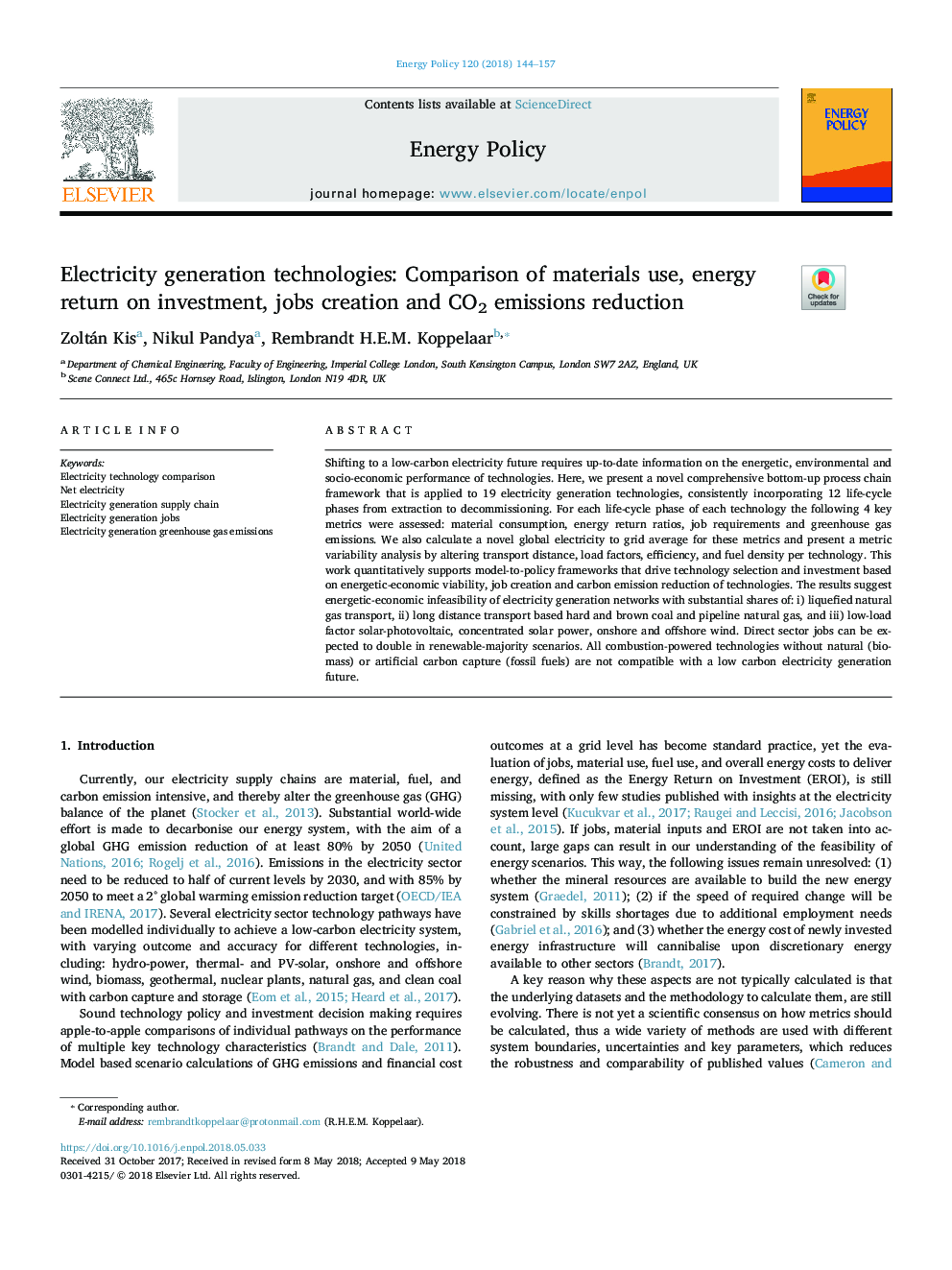| Article ID | Journal | Published Year | Pages | File Type |
|---|---|---|---|---|
| 7396542 | Energy Policy | 2018 | 14 Pages |
Abstract
Shifting to a low-carbon electricity future requires up-to-date information on the energetic, environmental and socio-economic performance of technologies. Here, we present a novel comprehensive bottom-up process chain framework that is applied to 19 electricity generation technologies, consistently incorporating 12 life-cycle phases from extraction to decommissioning. For each life-cycle phase of each technology the following 4 key metrics were assessed: material consumption, energy return ratios, job requirements and greenhouse gas emissions. We also calculate a novel global electricity to grid average for these metrics and present a metric variability analysis by altering transport distance, load factors, efficiency, and fuel density per technology. This work quantitatively supports model-to-policy frameworks that drive technology selection and investment based on energetic-economic viability, job creation and carbon emission reduction of technologies. The results suggest energetic-economic infeasibility of electricity generation networks with substantial shares of: i) liquefied natural gas transport, ii) long distance transport based hard and brown coal and pipeline natural gas, and iii) low-load factor solar-photovoltaic, concentrated solar power, onshore and offshore wind. Direct sector jobs can be expected to double in renewable-majority scenarios. All combustion-powered technologies without natural (biomass) or artificial carbon capture (fossil fuels) are not compatible with a low carbon electricity generation future.
Related Topics
Physical Sciences and Engineering
Energy
Energy Engineering and Power Technology
Authors
Zoltán Kis, Nikul Pandya, Rembrandt H.E.M. Koppelaar,
